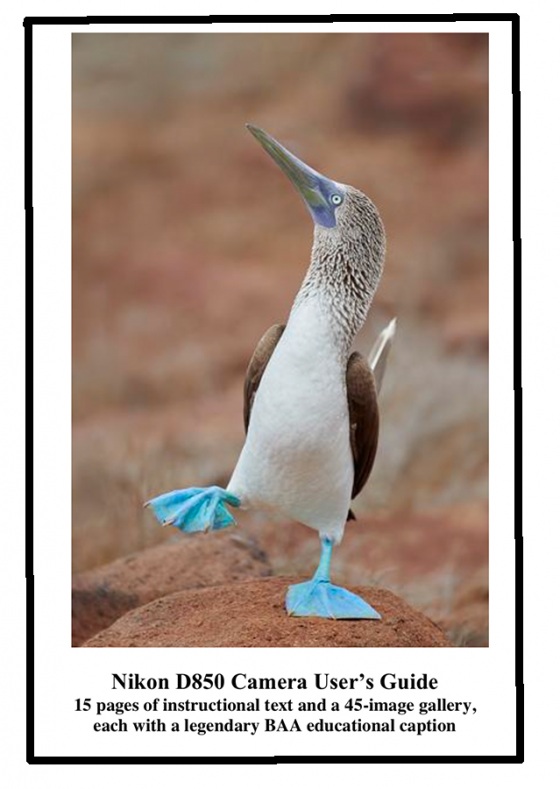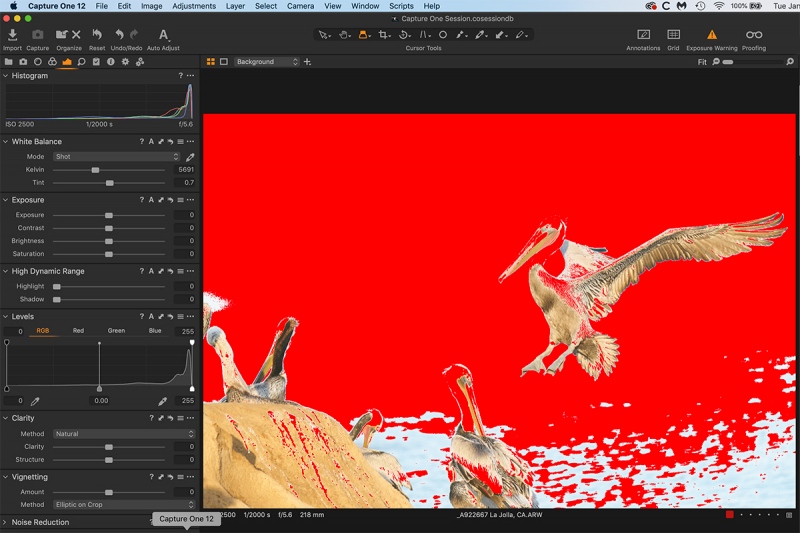Homer Bald Eagles …
I am returning to Homer for the Greatest-ever Bald Eagle Experience IPT at the end of February through the beginning of March 2020. My plan is to do a six-day (FEB 25 —26— 27 — 28 — 29 — MAR 1) trip followed by a day off and a five-day trip (MAR 3 — 4 — 5 -6-7). As in the past, folks may wish to do both trips back-to-back. I do expect both trips to fill very quickly. If you are seriously interested, please contact me via e-mail. Complete details very soon. Flight photography until your arms drop, most with a 70-200mm lens. We photograph from a chartered boat and make some landings as well.
See the Bald Eagle gallery here; most of the images are from Homer.
What’s Up?
Tuesday morning was a strange one at La Jolla. There were lots of pelicans before the sun came up over the hill. Just as the sun crested the ridge, every pelican took flight and flew west as if they all had heard a clearly rung dinner bell. Multiple IPT participant and good friend Monte Brown and I hung out for 30 minutes to no avail; not a single pelican returned … We did the nesting Brandt’s Cormorants for a while and had some point-blank chances with a gorgeous bird with long, white breeding plumes about its head. Next, we did some California Sea Lions and then did a bit of exploring and gull photography along the low cliffs and then a great brunch as usual at Cafe Vahik. Monte did a lot better with the sea lions than I did …
We meet the rest of the IPT group tonight at 7:00pm for an introductory Meet and Greet.
|
|
Nikon D850 Users e-Guide & Video<Purchase here. |
Nikon D850 Users e-Guide & Video
$50 via download
This great new guide includes 15 pages of text, a 46-image gallery, and a comprehensive camera handling video.
The text covers all of the menu item settings that I used on my two D850 bodies and each gallery image has a legendary BIRDS AS ART educational caption. The emphasis is two-fold:
1- getting your camera set-up so that it is optimized for bird photography.
2- sharing everything that I know about the Nikon AF system so that you can create consistently sharp images of static subjects, and most especially, of birds in flight and in action.
Though this guide is designed for the D850 nearly all of it applies to the D5 and to the D500 as well.
You can purchase your copy in the BAA On-line Store here. Both files are large so you will need a good internet connection to download them.
IPT Updates
Coming soon: one or two Spoonbill Boat IPTs, a spring Fort DeSoto Sandbar Secrets IPT, and a Nickerson Beach IPT this summer.
Do check out the Galapgos Gallery here.
- The GALAPAGOS Photo Cruise of a Lifetime IPT/The Complete Galapagos Archipelago Photographic Experience. August 17-31, 2021 on the boat. 13 FULL and two half-days of photography: $14,999.00.
You can see complete IPT info and details here.
BIRDS AS ART
BIRDS AS ART is registered in the U.S. Patent and Trademark Office.
Money Saving Reminder
If you need a hot photo item that is out of stock at B&H, would enjoy free overnight shipping, and would like a $50 discount on your first purchase over $1000.00, click here to order and enter the coupon code BIRDSASART at checkout. If you are looking to strike a deal on Canon or Nikon gear (including the big telephotos) or on a multiple item order, contact Steve Elkins via e-mail or on his cell at (479) 381-2592 (Eastern time) and be sure to mention your BIRDSASART coupon code and use it for your online order. Steve has been great at getting folks the hot items that are out of stock at B&H. Those include the SONY a7r IV, the SONY 200-600, the SONY 600mm f/4 GM, and the Nikon 500mm PF. Steve is eager to please.


Gear Questions and Advice
Too many folks attending BAA IPTs and dozens of photographers whom I see in the field and on BPN, are–out of ignorance–using the wrong gear especially when it comes to tripods and more especially, tripod heads… Please know that I am always glad to answer your gear questions via e-mail. Those questions might deal with systems, camera bodies, accessories, and/or lens choices and decisions.
|
|
|
This image was created on January 4, 2020 at La Jolla, CA. I used the hand held Sony FE 200-600mm f/5.6-6.3 G OSS lens (at 218mm) with the blazingly fast AF King, the Sony Alpha a9 II Mirrorless Digital camera body. ISO 2,500: 1/2000 sec. at f/5.6 in Manual mode was oover-exposed by a mile. AWB at 8:53am on a sunny morning. Center Zone C (tracking) AF worked perfectly by getting sharp focus on the bird’s eye. This is a Capture One Screen ACapture |
Keep or Delete: How Far to the Right is Too Far to the Right?
I am not sure how I screwed this one up so badly. I only know that I followed my own advice: “When unexpected action happens, acquire focus and push the shutter button. If you try to change the exposure or the AF point or mode, you will wind up with nothing.”
All the RED in the Capture One screen capture above is the over-exposure warning. My Highlight exposure warning value is 251.
You are editing your day folder and come across this image, a mile over-exposed with too, too many extraneous pelicans in the frame. Do you keep it or delete it? Be sure to let us know your reasons.
If In Doubt …
If you are in doubt about using the BAA B&H affiliate link correctly, you can always start your search by clicking here. Please note that the tracking is invisible. Web orders only. Please, however, remember to shoot me your receipt via e-mail.


Please Remember to use my Affiliate Links and to Visit the BAA Online Store 🙂
To show your appreciation for my continuing efforts here, we ask, as always, that you get in the habit of using my B&H affiliate links on the right side of the blog or Bedfords, for all of your photo and electronics purchases. Please check the availability of all photographic accessories in the New BIRDS AS ART Online Store, especially the Mongoose M3.6 tripod head, Wimberley lens plates, Delkin flash cards and accessories, and LensCoat stuff.
As always, we sell only what I have used, have tested, and can depend on. We will not sell you junk. We know what you need to make creating great images easy and fun. And please remember that I am always glad to answer your gear questions via e-mail.
I would, of course, appreciate your using our B&H affiliate links or Bedfords for all of your major gear, video, and electronic purchases. For the photographic stuff mentioned in the paragraph above, and for everything else in the new store, we, meaning BAA, would of course greatly appreciate your business. Here is a huge thank you to the many who have been using our links on a regular basis and those who will be visiting the New BIRDS AS ART Online Store as well.
Be sure to like and follow BAA on Facebook by clicking on the logo link upper right.
Typos
In all blog posts and Bulletins, feel free to e-mail or to leave a comment regarding any typos or errors. Just be right :).

















I think it also depends on whether you have chosen sRGB or Adobe RGB as your in-camera color space. sRGB has a narrower color gamut than Adobe RGB and will thus give you a blinkies warning on your camera’s LCD screen at a lower exposure setting (less exposure) than Adobe RGB will. This will provide you with an extra measure of protection from overexposure if you are shooting RAW.
I think I might keep it long enough to play with it for a minute on the computer (not delete in the field). Since La Jolla faces mostly west to the water, and you like the sun behind you (at 853 AM), the exposure you have is about +3 stops from “sunny 16” (if it was fully bright by then).
The underside of the wing on the approaching bird is bright, but with some work in post, you might create a nice “high key” image. It would take some “minus exposure reduction / compensation” overall, local adjustment and likely crop out some fraction of the birds on the left, but could work. Might be really interesting with high contrast in B&W, too. Just my $0.02 worth.
All the best.
Could be. Or not.
with love, artie
Hey Artie, Happy New year sir!!
That would probably make a cracking high key image if cropped correctly and possible clone out of the top of the closest pelicans head
Curious to see how the Sony handles the recovery of blown highlights if you try.
All the best!
Shane
Could be. Or not. Ditto on the new year’s wishes.
with love, artie
Hi Art,
I like the pose of the primary pelican coming in- regarding the “extraneous pelicans” you could always crop the image to eliminate some of those for a better composition, for example, cropping out those on the right edge of the frame.
I would like to see the image as it was without the red highlight warnings.
Best,
Rick Alvarnaz
Keep it – at least until the image has been evaluated further.
A highlight warning of 251 doesn’t necessarily indicate over exposure.
The warning tells us that the red areas are overexposed but not by how much.
A RAW file has a lot of latitude for highlight recovery so until you know for sure that important detail is irrecoverably lost it is best to keep the file.
Even if the rest is a whiteout, the feather detail in the wing is probably recoverable so you could keep the pelican and put it on a different background.
Good, but I have never put a bird against a different background as making such selections is extremely difficult and I do not know how to. doo. it properly 🙂
With love, a
Hi Artie,
Lightroom added a feature about a year ago called “range masking.” It has been available in Photoshop for quite a while. I just learned to use it and it is transformative. And I’m no power user. It is a selection tool that allows you to select part of an image based on brightness (or darkness) of tone. Or a band of tones. Is useful in landscapes to select a bright sky through a tree so I think tracing the outline of a bird would work too. It can be done in a few minutes.
Maybe you are already familiar with this technique, but if not I think it would be well worth your time to learn. Useful for selecting “hot spots” on birds too. Don’t know if it is available in Captue One.